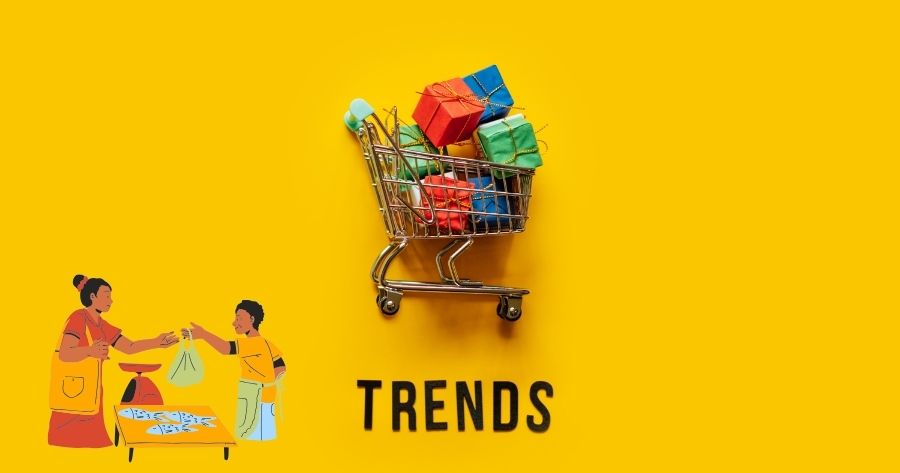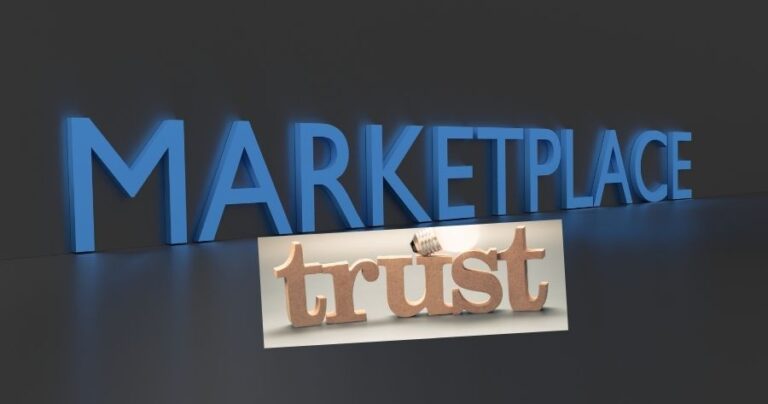
Why Marketplaces Are Evolving Faster Than Ever
The world of online marketplace is changing at lightning speed. Over the past decade, platforms like Amazon, eBay, Etsy, and Alibaba have redefined how we buy and sell. But today, a new wave of innovations — from AI-driven personalization to social commerce and cross-border shopping is reshaping the way people interact with digital marketplaces.
In the next 12 months, both consumers and sellers can expect big shifts. Artificial intelligence (AI) will get smarter, mobile-first platforms will continue dominating, and sustainability will no longer be optional, it will be expected. Whether you’re a small business owner, an online seller, or simply a curious shopper, understanding these trends will help you stay ahead of the curve.
Let’s dive into the marketplace trends you need to watch closely in the coming year.

The Rise of Niche Marketplaces
For years, large marketplaces like Amazon and eBay dominated the e-commerce landscape. But shoppers are increasingly seeking specialized platforms that cater to specific needs.
- Example: Depop, a marketplace for vintage and pre-loved fashion, has grown to over 35 million registered users, mostly Gen Z.
- Why it matters: Consumers want personalized experiences and trust platforms that specialize in a niche.
In the next year, expect to see:
- Growth of pet-specific marketplaces, such as Chewy.
- More platforms for sustainable fashion, like Vestiaire Collective.
- Marketplaces for digital-only goods like NFTs, digital art, and templates.
If you’re an entrepreneur, building or selling on a niche marketplace could mean stronger brand loyalty and higher engagement.
AI and Personalization in Marketplaces
Artificial Intelligence is no longer futuristic, it’s already here, and it’s shaping the way we shop.
- Amazon’s Recommendation Engine generates 35% of the company’s revenue by suggesting products.
- AI is also being used for fraud detection, dynamic pricing, and customer service chatbots.
Over the next year, expect to see:
- Hyper-personalized recommendations based on browsing habits, purchase history, and even social media activity.
- AI-powered product descriptions (already being tested on platforms like Shopify).
- Improved image recognition search, just snap a photo, and marketplaces suggest similar items.
Sellers should optimize product listings with detailed data, as AI thrives on information.
Social Commerce & Marketplace Integration
Shopping is becoming more social. Platforms like TikTok, Instagram, and Facebook are blending entertainment with e-commerce.
- TikTok Shop has already crossed $20 billion in GMV (gross merchandise value) globally.
- Instagram and Facebook Marketplace now drive millions of transactions daily.
In the next year:
- Livestream shopping (popular in China) will continue to grow in the U.S. and Europe.
- Influencer-driven sales will dominate; users are more likely to buy products endorsed by creators they trust.
- Marketplaces will embed directly into social platforms, cutting the steps between discovery and purchase.
If you sell online, integrating with social commerce platforms is no longer optional.
Cross-Border Marketplaces and Global Trade Expansion
Shoppers are more open to buying from international sellers than ever before.
- Stat: According to eMarketer, 22% of global e-commerce transactions in 2024 came from cross-border trade.
- Platforms like Alibaba, Temu, and Shein are spearheading this global expansion.
Expect to see:
- Faster, cheaper international shipping solutions.
- Localized experiences (currencies, languages, tailored product suggestions).
- Growing interest in African and Southeast Asian marketplaces, as internet access grows.
Sellers should consider international shipping options to expand their customer base.
Sustainability & Ethical Consumerism
Consumers are more eco-conscious than ever. They want brands that align with their values.
- Stat: 77% of shoppers say they are more likely to purchase from a brand committed to sustainability.
- Marketplaces like Etsy highlight eco-friendly sellers, while platforms like ThredUp thrive on resale.
In the next year:
- Marketplaces will add eco badges to highlight sustainable items.
- More second-hand and circular economy platforms will launch.
- Expect stricter regulations on packaging and carbon footprint transparency.
Sellers who adopt sustainable practices will win trust and long-term loyalty.
Payment Innovations in Marketplaces
Payment methods are evolving rapidly.
- BNPL (Buy Now, Pay Later) options like Klarna and Afterpay are attracting millions of Gen Z and millennial buyers.
- Cryptocurrencies and stablecoins are entering the marketplace ecosystem, with Shopify already enabling crypto payments.
In the next year:
- Expect faster checkout experiences (like Amazon’s one-click).
- More marketplaces adopting digital wallets (Apple Pay, Google Pay).
- BNPL services becoming more regulated but still growing.
Offering flexible payment methods will be critical to conversion rates.
Mobile-First Marketplaces
Shoppers are glued to their phones.
- Stat: By 2025, over 72% of e-commerce sales will come from mobile devices.
- Apps like Shein, Temu, and Pinduoduo are mobile-first success stories.
Trends to expect:
- Simplified app-only shopping experiences.
- Voice search integration on mobile marketplaces.
- More in-app gamification (rewards, spins, streaks) to keep buyers engaged.
Sellers must ensure their listings are mobile-friendly, with clear images and short descriptions.
B2B Marketplaces on the Rise
Business-to-business marketplaces are growing rapidly.
- Alibaba continues to dominate, but platforms like Amazon Business and ThomasNet are gaining traction.
- Stat: The global B2B e-commerce market is projected to reach $36 trillion by 2026.
Over the next year:
- Expect more specialized B2B platforms (e.g., construction supplies, healthcare equipment).
- Improved bulk order systems and flexible payment solutions.
- Smaller businesses entering B2B marketplaces to cut costs.
B2B sellers who embrace digital marketplaces will see explosive growth opportunities.
Logistics, Speed, and Last-Mile Innovation
Fast delivery has become the new normal.
- Amazon Prime set the standard with same-day and next-day delivery.
- Startups are testing drones and autonomous delivery robots.
Expect to see:
- More micro-fulfillment centers in cities.
- Smarter last-mile delivery tracking.
- Growth in locker and pickup point systems.
Sellers who partner with platforms offering quick, reliable delivery will win customers.
Trust, Safety & Reviews
Shoppers need confidence when buying.
- Fake reviews have become a major issue, costing consumers billions annually.
- Marketplaces are investing heavily in AI-driven review verification.
In the next year:
- Expect more verified purchase badges.
- Increased use of ID verification for sellers.
- Stricter fraud prevention systems.
Trust is currency. Sellers must maintain high ratings and transparency.
Data Privacy & Regulation Impact
Governments are cracking down on how marketplaces handle user data.
- GDPR in Europe and CCPA in California are just the beginning.
- The EU’s Digital Services Act (DSA) now requires transparency in algorithms and ads.
Over the next year:
- Marketplaces will limit targeted ads to comply with privacy laws.
- Stricter policies on counterfeit goods will be enforced.
- Sellers will need to be aware of cross-border compliance rules.
Sellers must stay updated with regulations to avoid penalties.
Hybrid Marketplaces (Physical + Digital)
The line between online and offline shopping is blurring.
- Amazon Go stores use AI to let shoppers “grab and go.”
- Walmart is expanding its marketplace alongside physical retail.
Expect to see:
- More click-and-collect services.
- Integration of augmented reality (AR) in stores.
- Physical showrooms that link directly to online purchases.
Hybrid shopping will be the future, and sellers should consider both digital and offline touchpoints.
Emerging Regional Marketplaces to Watch
Not all marketplace growth is happening in the U.S. and Europe.
- Africa: Platforms like Jumia are making waves.
- Southeast Asia: Shopee and Lazada dominate.
- Latin America: Mercado Libre is booming.
In the next year:
- Regional marketplaces will compete globally.
- Localized solutions (payment systems, delivery) will fuel growth.
- Expect rising competition for cross-border sellers.
Sellers should not ignore fast-growing regional markets.
The Future of Marketplace Marketing
Marketplace visibility is getting more competitive.
- Sponsored listings are becoming essential.
- Marketplaces are offering AI-powered ad campaigns.
Expect to see:
- Higher competition for top ad spots.
- Growth of affiliate-driven marketplace marketing.
- More integration of content + commerce (blogs, video, shopping combined).
Marketing inside marketplaces will require investment, not just organic visibility.
What the Next 12 Months Hold
Marketplaces are evolving faster than ever. Sellers and buyers alike should prepare for:
- AI shaping personalized shopping.
- Social media driving marketplace traffic.
- Sustainability becoming mandatory, not optional.
- Global trade opportunities widening.
- Faster payments and faster deliveries.
The next year will be defined by innovation, trust, and personalization. Those who adapt quickly will reap the biggest rewards.
Frequently Asked Questions (FAQ)
1. Which marketplaces are growing the fastest?
TikTok Shop, Temu, and regional players like Shopee and Mercado Libre are experiencing massive growth.
2. Will AI replace sellers on marketplaces?
No. AI enhances personalization and efficiency, but human sellers remain crucial for creativity, branding, and trust.
3. Are niche marketplaces better than big platforms?
It depends. Niche platforms offer loyal audiences, while large platforms provide scale. Many sellers combine both.
4. How can small businesses compete on large marketplaces?
By focusing on unique branding, excellent customer service, and leveraging social commerce integration.
5. Is sustainability really important to buyers?
Yes. Studies show over 70% of consumers prefer sustainable options and are willing to pay more for eco-friendly products.





